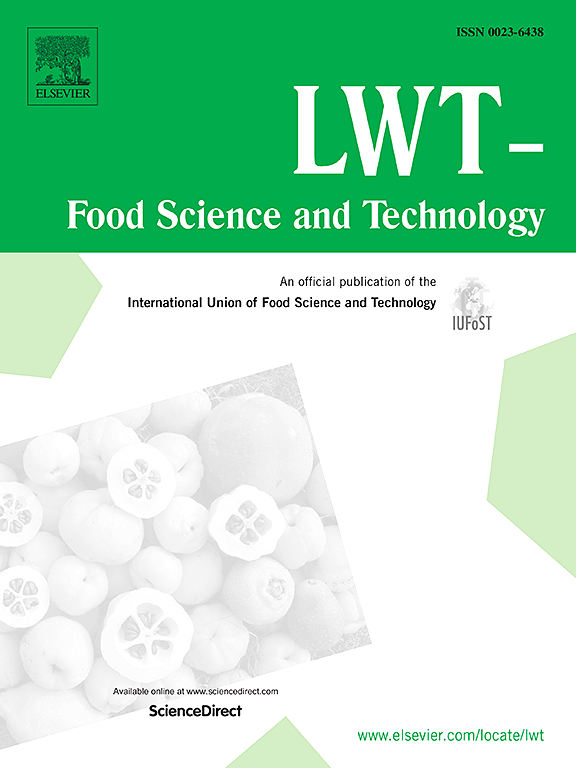
Fast dissolving, hermetically sealable, edible whey protein isolate-based films for instant food and/or dry ingredient pouches (2020)
Title : Fast dissolving, hermetically sealable, edible whey protein isolate-based films for instant food and/or dry ingredient pouches
Researcher : Theeranun Janjarasskul, Kanitha Tananuwonga, Thunyaluck Phupoksakula and Somruedee Thaiphanit
Department : ภาควิชาเทคโนโลยีการอาหาร คณะวิทยาศาสตร์ มหาวิทยาลัยสยาม
E-mail : somruedee.tha@siam.edu
ฐานข้อมูลงานวิจัย มหาวิทยาลัยสยาม: https://e-research.siam.edu/kb/fast-dissolving-hermetically-sealable/
Link to article: LWT-Food Science and Technology, Vol.134 (2020), page 110102. https://doi.org/10.1016/j.lwt.2020.110102
Journal : LWT / in Scopus
Bibliography : Janjarasskul, T., Tananuwong, K., Phupoksakul, T., & Thaiphanit, S. (2020). Fast dissolving, hermetically sealable, edible whey protein isolate-based films for instant food and/or dry ingredient pouches. LWT-Food Science and Technology, 134, 110102. https://doi.org/10.1016/j.lwt.2020.110102

Forced oscillation technique as a predictor for loss of control in asthmatic children (2020)
Title : Forced oscillation technique as a predictor for loss of control in asthmatic children
Researcher : Clin.Prof.Suwat Benjaponpitak
Department : Faculty of Medicine, Siam University, Bangkok, Thailand
E-mail : med@siam.edu
Abstract : Background: A reliable objective tool using as a predictor of asthma control status could assist asthma management.
Objective: To find the parameters of forced oscillation technique (FOT) as predictors for the future loss of asthma symptom control.
Methods: Children with well-controlled asthma symptom, aged 6-12 years, were recruited for a 12-week prospective study. FOT and spirometer measures and their bronchodilator response were evaluated at baseline. The level of asthma symptom control was evaluated according to Global Initiative for Asthma.
Results: Among 68 recruited children, 41 children (60.3%) maintain their asthma control between 2 visits (group C-C), and 27 children (39.7%) lost their asthma control on the follow-up visit (group C-LC). Baseline FOT parameters, including the values of respiratory resistance at 5 Hz (R5), respiratory resistance at 20 Hz (R20), respiratory reactance at 5 Hz, area of reactance, %predicted of R5 and percentage of bronchodilator response (%∆) of R5 and R20 were significantly different between C-C and C-LC groups. In contrast, only %∆ of forced vital capacity, forced expiratory volume in 1 second (FEV1), and FEF25%-75% (forced expiratory flow 25%-75%) were significantly different between groups. Multiple logistic regression analysis revealed that %predicted of R5, %∆R5, %predicted of FEV1 and %∆FEV1 were the predictive factors for predicting the future loss of asthma control. The following cutoff values demonstrated the best sensitivity and specificity for predicting loss of asthma control: %predicted of R5=91.28, %∆R5=21.2, %predicted of FEV1=89.5, and %∆FEV1=7.8. The combination of these parameters predicted the risk of loss of asthma control with area under the curve of 0.924, accuracy of 83.8%.
Conclusion: Resistance FOT measures have an additive role to spirometric parameter in predicting future loss of asthma control.
Keywords: Asthma; Frequency of resonance; Reactance; Resistance; Spirometry.
Link to Academic article: DOI: 10.5415/apallergy.2020.10.e3
Journal : Asia Pacific Allergy Vol.10 No.1 (2020)
Bibliography : Kreetapirom, P., Kiewngam, P., Jotikasthira, W., Kamchaisatian, W., Benjaponpitak, S., & Manuyakorn, W. (2020, January 17). Forced oscillation technique as a predictor for loss of control in asthmatic children. Asia Pac Allergy, 10(1), e3. doi: 10.5415/apallergy.2020.10.e3. PMID: 32099825; PMCID: PMC7016320.
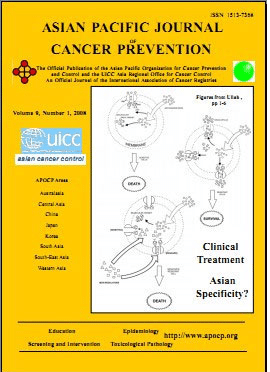
Frequency and association of GSTM1 and GSTT1 gene polymorphisms with survival in breast cancer patients (2020)
Title : Frequency and association of GSTM1 and GSTT1 gene polymorphisms with survival in breast cancer patients
Researcher : Phakarat Tangkhuenkhan 1 Kitiphong Harncharoen 1 Somchai Thanasitthichai 2 Danai Tiwawech 3 Wichai Purisa 2 Pensri Saelee 2 Ruxjinda Wattanalai 4
1 Faculty of Public Health, Mahidol University, Bangkok, Thailand.
2 Research Division, National Cancer Institute, Bangkok, Thailand.
3 Faculty of Pharmacy, Naresuan University, Phitsanulok, Thailand.
4 Siam University, Bangkok, Thailand.
ฐานข้อมูลงานวิจัย มหาวิทยาลัยสยาม : –
Link to article : Asian Pacific Journal of Cancer Prevention, 2020, 21(8), pp. 2251–2257. https://journal.waocp.org/article_89214.html
Journal : Asian Pacific Journal of Cancer Prevention / Scopus
Citation : Tangkhuenkhan, P., Harncharoen, K.,Thanasitthichai, S.,Tiwawech, D., Purisa, W., Saelee, P., & Wattanalai, R. (2020). Frequency and association of GSTM1 and GSTT1 gene polymorphisms with survival in breast cancer patients. Asian Pacific Journal of Cancer Prevention, 21(8), 2251–2257.
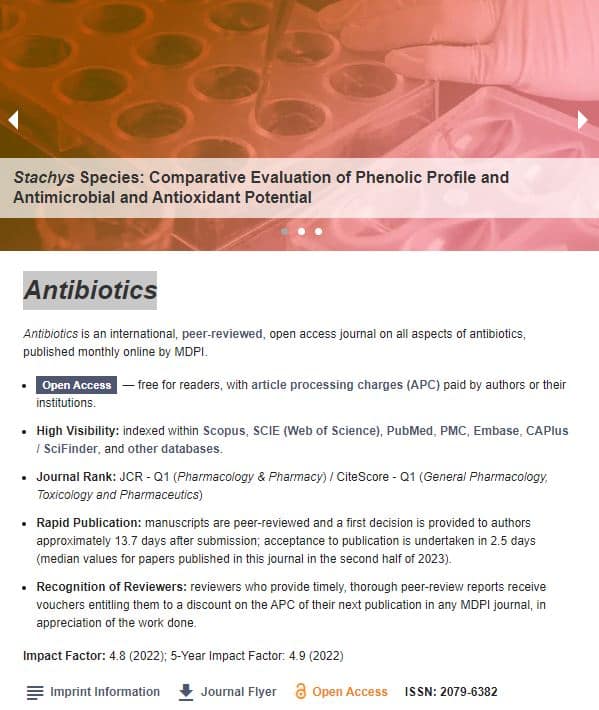
In vitro activities of colistin and sitafloxacin combinations against multidrug-, carbapenem-, and colistin-resistant acinetobacter baumannii using the broth microdilution checkerboard and time-kill methods (2020)
Title : In vitro activities of colistin and sitafloxacin combinations against multidrug-, carbapenem-, and colistin-resistant acinetobacter baumannii using the broth microdilution checkerboard and time-kill methods
Researcher : Rodjun, V., Houngsaitong, J., Montakantikul, P., Paiboonvong, T., Khuntayaporn, P., Yanyongchaikit, P., & Sriyant, P.
ฐานข้อมูลงานวิจัย มหาวิทยาลัยสยาม : –
Link to article: Antibiotics, 2020, 9(8), pp. 1–10, 516. https://www.mdpi.com/2079-6382/9/8/516
Journal : Antibiotics / Scopus
Citation : Rodjun, V., Houngsaitong, J., Montakantikul, P., Paiboonvong, T., Khuntayaporn, P., Yanyongchaikit, P., & Sriyant, P. (2020). In Vitro Activities of Colistin and Sitafloxacin Combinations against Multidrug-, Carbapenem-, and Colistin-Resistant Acinetobacter baumannii Using the Broth Microdilution Checkerboard and Time-Kill Methods. Antibiotics, 9(8), 516. https://doi.org/10.3390/antibiotics9080516
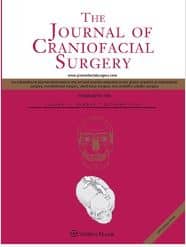
Localization and topography of the arteries on the middle forehead region for eluding complications following forehead augmentation: Conventional cadaveric dissection and ultrasonography investigation (2020)
Title : Localization and topography of the arteries on the middle forehead region for eluding complications following forehead augmentation: Conventional cadaveric dissection and ultrasonography investigation
Researcher : Phumyoo, T., Jiirasutat, N., Jitaree, B., Rungsawang, C., Pratoomthai, B., Tansatit, T.
Abstract :Forehead augmentation with filler injection is one of the most dangerous procedures associated with iatrogenic intravascular injection resulting in the severe complications. Nonetheless, few studies have determined the explicit arterial localization and topography related to the facial soft tissues and landmarks. Therefore, this study aimed to determine an arterial distribution and topography on the middle forehead region correlated with facial landmarks to grant an appropriate guideline for enhancing the safety of injection. Nineteen Thai embalmed cadavers were discovered with conventional dissection and 14 Thai healthy volunteers were investigated with ultrasonographic examination on the middle forehead. This study found that at the level of mid-frontal depression point, the transverse distance from the medial canthal vertical line to the superficial and deep branches of supraorbital artery were 9.1 mm and 15.1 mm, respectively. Whereas the depths from the skin of these arteries were 4.1 mm and 4.3 mm, respectively. Furthermore, the frontal branch of superficial temporal artery was detectable in 42.1% as an artery entering the forehead area. At the level of lateral canthal vertical line, the vertical distance of frontal branch was 31.6 mm, and the depth from skin of the artery was 2.7 mm. In conclusion, a proper injection technique could be performed based on an intensive arterial distribution and topography, and ultrasonographic examination before the injection is also suggested in order to restrict the opportunity of severe complications.
Keywords: Complication of filler injection , forehead augmentation , frontal branch of superficial temporal artery , superficial and deep branches of supraorbital artery , ultrasonographic investigation
Link to Academic article: https://journals.lww.com/jcraniofacialsurgery/Abstract/2020/10000/Localization_and_Topography_of_the_Arteries_on_the.43.aspx
Journal : Journal of Craniofacial Surgery, 2020, 31(7).
Bibliography : Phumyoo, T., Jiirasutat, N., Jitaree, B., Rungsawang, C., Pratoomthai, B., & Tansatit, T. (2020). Localization and topography of the arteries on the middle forehead region for eluding complications following forehead augmentation: Conventional cadaveric dissection and ultrasonography investigation. Journal of Craniofacial Surgery, 31(7), 2029–2035.
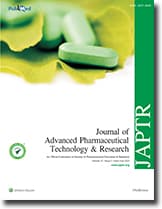
Modulation of platelet functions by Careya sphaerica Roxb. leave extracts (2021)
Title : Modulation of platelet functions by Careya sphaerica Roxb. leave extracts
Researcher : Warachate Khobjai1, Wanvisa Ninlaor2, Worawan Watcharasamphankul3, Thaksaorn Thongom2, Suriyan Sukati4
Department : 1 Department of Preclinic, Faculty of Medicine, Siam University, Phasi Charoen, Bangkok, Thailand
2 Department of Thai Traditional Medicine, Thai Traditional Medicine College, Rajamangala University of Technology Thanyaburi, Pathum Thani, Thailand
3 Department of Clinical Microbiology, Faculty of Medical Technology, Nation University, Lampang, Thailand
4 Department of Medical Technology, School of Allied Health Sciences, Walailak University, Nakhon Si Thammarat, Thailand
Abstract : Platelets form a plug to prevent blood loss and contribute to wound healing. Kradonbok, Careya sphaerica Roxb., is a Thai plant with medicinal properties. Conventionally, leaves of C. sphaerica are being used to help wound healing in Thailand. The present study was aimed to investigate the effect of C. sphaerica on the function of platelet. Four different extracts of leaves of C. sphaerica (distilled water, methanol, ethanol, and chloroform extracts) were prepared. The extracts at 5.0 mg/ml per dose were tested for the effect of C. sphaerica on platelet adhesion and aggregation properties, by employing a microtiter plate approach. The phytochemical identification was done by using gas chromatography–mass spectrometry (GC-MS). Our data revealed that chloroform extract significantly activated thrombin-induced platelet adhesion (105.27 ± 0.11%, P < 0.05). None of the extracts exhibited an improvement in platelet aggregation. Further GC-MS analysis of the chloroform extract revealed five key phytochemical constituents with potential platelet activation properties. In conclusion, our study evaluated platelet activation and potentially wound healing property of C. sphaerica. GC-MS analysis identified potential bioactive phytochemical compounds in C. sphaerica which warrant further investigation to characterize these compounds.
Keywords: Careya sphaerica roxb, platelet adhesion, platelet aggregation, primary hemostasis, wound healing
Link to Academic article: DOI:10.4103/japtr.japtr_95_21
Journal : Journal of Advanced Pharmaceutical Technology and Research, 2021, 12(4).
Bibliography : Khobjai, W., Ninlaor, W., Watcharasamphankul, W., Thongom, T., & Sukati, S. (2021). Modulation of platelet functions by Careya sphaerica Roxb. leave extracts. J Adv Pharm Technol Res, 12(4), 420-424. Retrieved from: https://www.japtr.org/text.asp?2021/12/4/420/328638
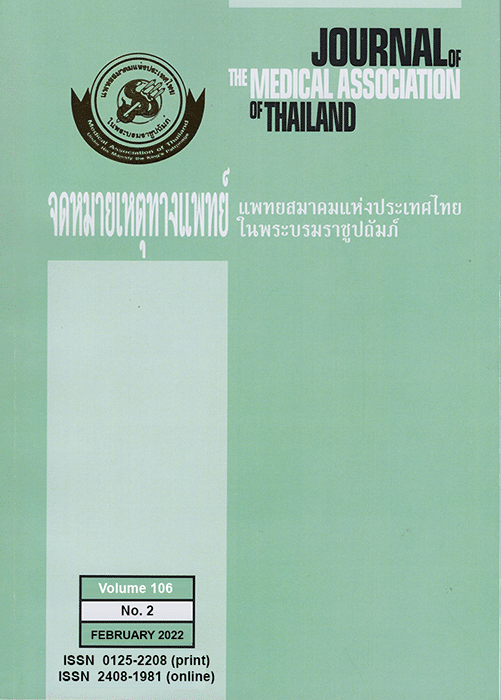
Obstetric and Neonatal Outcomes of Excessive Weight Gain in Different Pre-Pregnancy Body Mass Index using BMI Criteria for Asians by World Health Organization Western Pacific Region (WPRO) (2020)
Title : Obstetric and Neonatal Outcomes of Excessive Weight Gain in Different Pre-Pregnancy Body Mass Index using BMI Criteria for Asians by World Health Organization Western Pacific Region (WPRO)
Researcher : Somprasit, C., Tanprasertkul, C., Nanthakomon, T., Kovavisarach, E., Rattanasiri, T.,… Saksiriwutth, P.
Abstract : Objective: To evaluate the relationship between gestational weight gain and pre-pregnancy body mass index (BMI) on the risk of adverse obstetric and neonatal outcomes using cut off BMI criteria by Regional Office for the Western Pacific Region of WHO (WPRO).
Materials and Methods: The present study was a retrospective cohort. Subjects of live birth singletons who had full term delivered at four tertiary care centers, teaching university hospitals between January and December 2012 were enrolled. All pregnant women with pre-pregnancy BMI 18.5 kg/m2 or over were recruited and categorized into two groups, normal BMI and high BMI. The level of BMI at 18.5 to 22.9 kg/m2 was defined as normal BMI, and level at or over 23 kg/m2 was defined as high BMI, respectively. Gestational weight gain (GWG) was grouped into two categories as recommended weight gain (RWG) and excessive weight gain (EWG) which defined as 11.5 to 16 kg and above 16 kg in normal pre-pregnancy BMI and 5 to 9 kg and above 9 kg in high prepregnancy BMI, respectively. The association between RWG and EWG in different pre-pregnancy BMI groups and poor adverse pregnancy outcomes were evaluated.
Results: Two thousand seven hundred and thirty-three pregnant women were recruited. Normal and high pre-pregnancy BMI women were 1,840 (67.33%) and 893 (32.67%), respectively. Of these, 2,036 cases had complete data for evaluation. In normal prepregnancy BMI, 737 (59.58%) were categorized as RWG (11.5 to 16 kg) and 500 (40.42%) as EWG (>16 kg), while in high prepregnancy BMI, 273 (34.17%) were categorized as RWG (5 to 9 kg) and 526 (65.83%) as EWG (>9 kg). The mean weight gain in the normal pre-pregnancy BMI group was 13.80+1.35 kg vs. 20.39+3.84 kg in the RWG and EWG group, respectively. While the mean weight gain in high pre-pregnancy BMI group was 7.32+1.38 kg vs. 15.24+4.46 kg in the RWG and EWG group, respectively. In multivariate logistic analysis, normal pre-pregnancy BMI group with EWG had increased risk of instrumental delivery or cesarean section (Odd ratio; with OR 1.06, 95% CI 1.03 to 1.08, p<0.001) and high pre-pregnancy BMI group with EWG, there was significant\ increased risk of preeclampsia with birth weight above 90th centile (OR 1.09, 95% CI 1.04 to 1.15 and OR 1.09, 95% CI 1.06 to 1.12 with p = 0.001 and <0.001, respectively).
Conclusion: For pregnant women with high pre-pregnancy BMI by WPRO criteria increased the risk of pregnancy complications and adverse pregnancy outcomes especially in excessive weight gain women. The high pre-pregnancy BMI should be a concern for pre-conception counseling. Optimal GWG ranges should develop based on pre-pregnancy BMI cut off for Asian women.
Keywords: Neonatal birth weight, Gestational weight gain, Pre-pregnancy BMI, WPRO
Link to Academic article: http://www.jmatonline.com/index.php/jmat/article/view/11079
Journal : Journal of the Medical Association of Thailand, 2020, 103(Suppl.4)
Bibliography : Somprasit, C., Tanprasertkul, C., Nanthakomon, T., Vinayanuvattikhun, N., Kovavisarach, E., Panichakul, P.,… Saksiriwutth, P. (2020). Obstetric and Neonatal Outcomes of Excessive Weight Gain in Different Pre-Pregnancy Body Mass Index using BMI Criteria for Asians by World Health Organization Western Pacific Region (WPRO). Journal of the Medical Association of Thailand, 103(Suppl.4), 88–93.

Proceeding National and International Academic Conference Innovation and Management for Sustainability-2020
National and International Academic Conference Innovation and Management for Sustainability 2020
SECTION 1 : Link Download (compressed 8 MB) | Link Download (39.9 MB )
SECTION 2 : ![]() Download UPDATE 2020-10-28 (8.94 MB)
Download UPDATE 2020-10-28 (8.94 MB)
COVER : Download PDF | Download JPEG
POSTER : Download JPEG
URL : https://mba.siam.edu/conference/ | https://mba.siam.edu/preceeding12/
Sub-themes:
- Innovation and Sustainability in Education
- Social Innovation and Entrepreneurship for Sustainability
- Policy and Public Management for Sustainability
- Technology and Digital Transformation for Sustainability
- Innovation and Sustainability in Health
- Sustainable Wellness and Well-Being Tourism
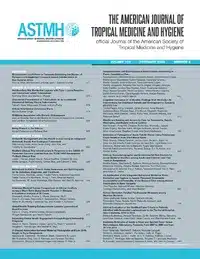
Seroprevalence of Dengue, Zika, and Chikungunya Viruses in Wild Monkeys in Thailand (2020)
Title : Seroprevalence of Dengue, Zika, and Chikungunya Viruses in Wild Monkeys in Thailand
Researcher :Tongthainan, D., Mongkol, N., Jiamsomboon, K., …Tulayakul, P., Boonnak, K.
Abstract : Zoonotic pathogens such as arboviruses have comprised a significant proportion of emerging infectious diseases in humans. The role of wildlife species as reservoirs for arboviruses is poorly understood, especially in endemic areas such as Southeast Asia. This study aims to determine the exposure history of different macaque species from national parks in Thailand to mosquito-borne flaviviruses and alphavirus by testing the serum samples collected from 25
northern pigtailed macaques, 33 stump-tailed macaques, and 4 long-tailed macaques for the presence of antibodies against dengue, Zika, and chikungunya viruses by plaque reduction neutralization assay. Specific neutralizing antibodies against Dengue virus (DENV1-4) and Zika virus (ZIKV) were mainly found in stump-tailed macaques, whereas neutralizing antibody titers were not detected in long-tailed macaques and pigtailed macaques as determined by 90% plaque
reduction neutralization assay (PRNT90). One long-tailed macaque captured from the south of Thailand exhibited antibody titers against chikungunya virus (CHIKV), suggesting enzootic of this virus to nonhuman primates (NHPs) in Thailand. Encroachment of human settlements into the forest has increased the interface that exposes humans to zoonotic pathogens such as arboviruses found in monkeys. Nonhuman primates living in different regions of Thailand showed different patterns of arboviral infections. The presence of neutralizing antibodies among wild monkeys in Thailand strongly suggests the existence of sylvatic cycles for DENV, ZIKV, and CHIKV in Thailand. The transmission of dengue, Zika, and chikungunya viruses among wild macaques may have important public health implications.
Link to Academic article: DOI: https://doi.org/10.4269/ajtmh.20-0057
Journal : American Journal of Tropical Medicine and Hygiene, 2020, 103(3).
Bibliography : Tongthainan, D., Mongkol, N., Jiamsomboon, K., Suthisawat, S., Sanyathitiseree, P., Sukmak, M.,… Boonnak, K. (2020). Seroprevalence of Dengue, Zika, and Chikungunya Viruses in Wild Monkeys in Thailand. American Journal of Tropical Medicine and Hygiene, 103(3), 1228–1233.

Sustainable Development Goals 2018-2020 Report
Title : Sustainable Development Goals 2018-2020 Report
Department : Siam University, 38 Petchkasem Rd., Bang Wa, Phasi Charoen, Bangkok 10160, Thailand
[dflip id="7883"][/dflip]
Bibliography : Siam University. (2020). Sustainable Development Goals 2018-2020 Report. Bangkok, Thailand: Author.